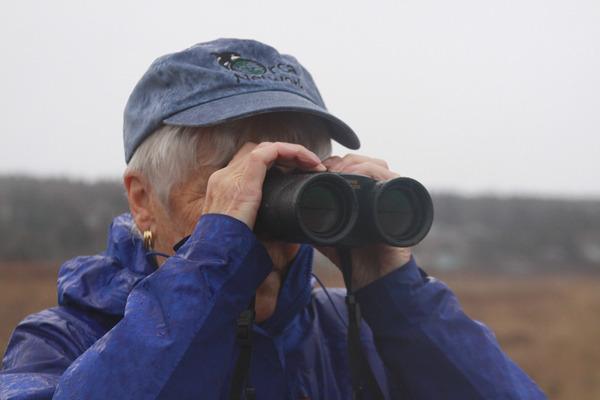In a small pond across the highway from Crockett Lake, Jill Hein spots a long string of diving ducks that scoot along the water in a straight line.
“I can never get a picture of those guys,” Hein said of a species she calls scaups. “As soon as they see a person approaching, they take off.”
This Saturday, Hein and others will get as close as possible to birds such as these, not to ruffle any feathers but to give birdkind a lift.
Hein, of Coupeville, Jenny Brown, of Oak Harbor, and Govinda Rosling, of South Whidbey, are Whidbey Audubon Society members who are coordinators of the Audubon Christmas Bird Count that will be taking place on two different dates on Whidbey Island.
Hein and Brown are organizers of the island’s north count, which will take place Dec. 20, spanning Coupeville and Oak Harbor.
Rosling coordinates the south effort, taking place Jan. 3 and stretching over much of South Whidbey up to Greenbank and even to the shores of Camano Island.
The purpose of the Christmas Bird Count, which is in its 115th year, is to gain global data of bird populations to aid research and conservation efforts.
It is regarded as the longest running citizen-science survey in the world.
“The Bird Count is one of the sources they used when Audubon came out with huge climate change information,” said Brown, a retired elementary school teacher. “They can really see some trends. They think over half of our birds are in danger. Their ranges are changing rapidly because of climate change.”
Whidbey Island is a popular landing spot for migratory birds and offers the sort of diverse habitat that keeps many resident birds content.
This time of year, participants in the count expect to see a large variety of birds, including shorebirds, wading birds and raptors.
Last year, the north count for all species was 20,174 birds, including a rare sighting of a great egret in Dugualla Bay and a golden eagle not far from Joseph Whidbey State Park.
“I just think it’s fun,” said Hein, who’s been participating in bird counts the past three years. “I kind of like numbers. I really enjoy the impact when you tally it all up.”
Unlike other Audubon innovations such as the Great Backyard Bird Count, the Christmas Bird Count is a more formal effort, consisting of teams that collect bird population data in a specific area during a designated time frame.
The range of each of Whidbey’s counts covers a wide circle 15 miles in diameter. In each count, 15 different teams of four people will go off in their coverage areas in the morning to count birds then return in the late afternoon to report their totals.
In the north count, the center of the search is Monroe Landing Road and Highway 20, meaning data will be collected in most of Central and North Whidbey but will not include Deception Pass State Park, which is covered by another Audubon chapter.
In the south, the count range is centered at Goss Lake in Langley. The south count includes Greenbank to the north and Clinton to the south as well as parts of Camano Island.
Each team normally has one birder particularly skilled at bird identification. Participants don’t have to be Audubon members.
North Whidbey teams have been formed; however, residents of Oak Harbor and Coupeville who’d like to share bird counts from their own property on Dec. 20 may do so by emailing Brown at jennywahere@gmail.com.
South Whidbey teams are still seeking participants for their Jan. 3 count. Those interested may email Rosling at govinda@whidbey.com.
The most common bird found during the north count last year was the European starling with 2,483 counted, followed by the seagull (1,783), American wigeon (1,443) and American robin (1,007). Also sighted were: 856 blackbirds, 828 dunlins, 812 dark-eyed juncos, 809 mallards, 658 northern pintails, 64 bald eagles, 59 common loons, 50 great blue herons, 35 Anna’s hummingbirds and 22 great horned owls, among many others.
Crockett Lake in Coupeville and Deer Lagoon on Useless Bay are among the favorite places to visit for serious birders because of their rich diversity of species, particular migratory shorebirds. Each are labeled Important Birding Areas by the National Audubon Society.
“We really are very fortunate because we have so many different habitats here,” Brown said. “We have a wide variety of birds that either live here or visit.”
Whidbey Audubon, organized in 1982, orchestrated its first Christmas Bird Count in 1987. Rosling started the South Whidbey count three years ago.
Hein hopes to get out to Crockett Lake.
“I love sea birds,” Hein said. “Crockett Lake has so many of them. There’s just a large variety of birds.”



